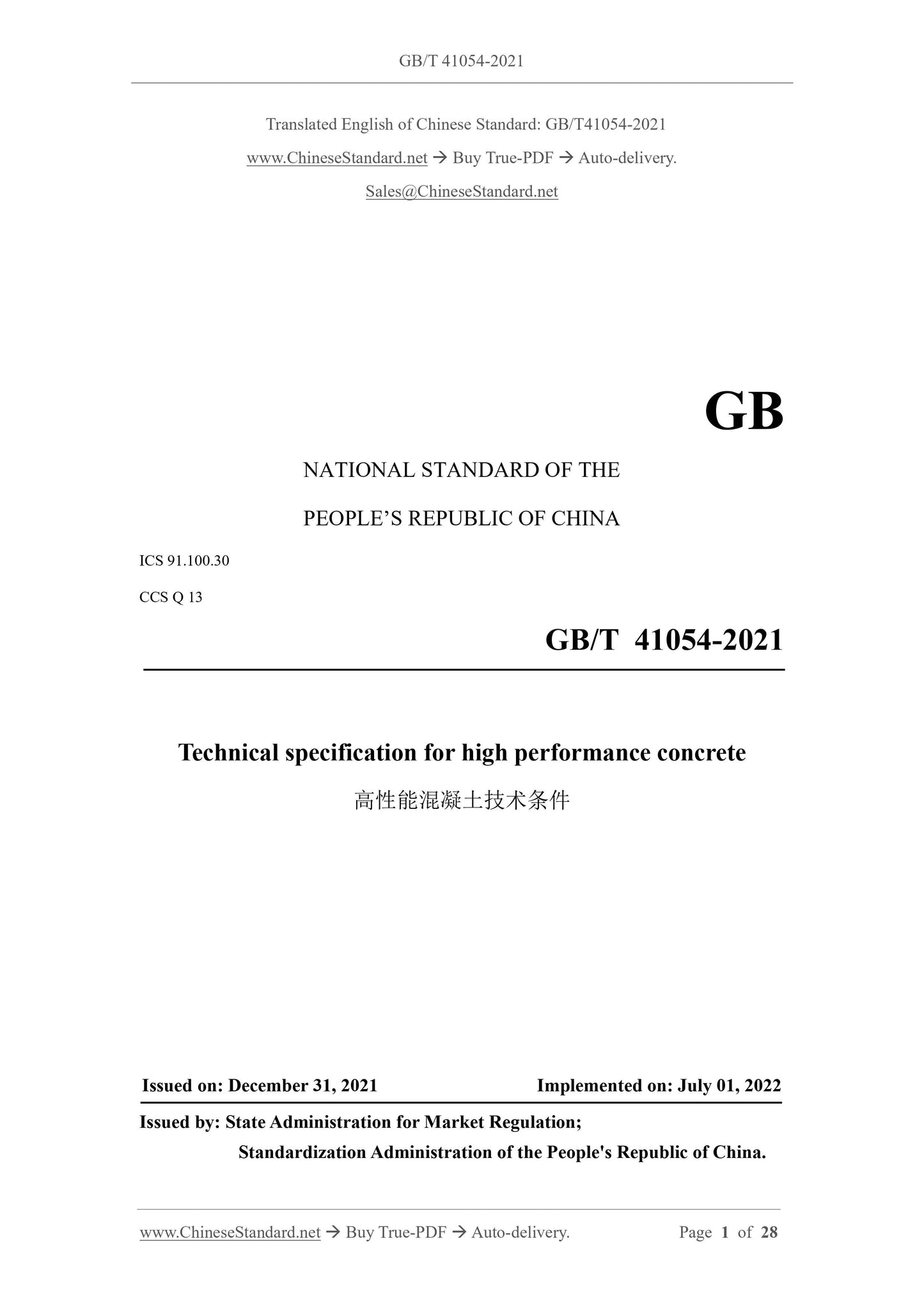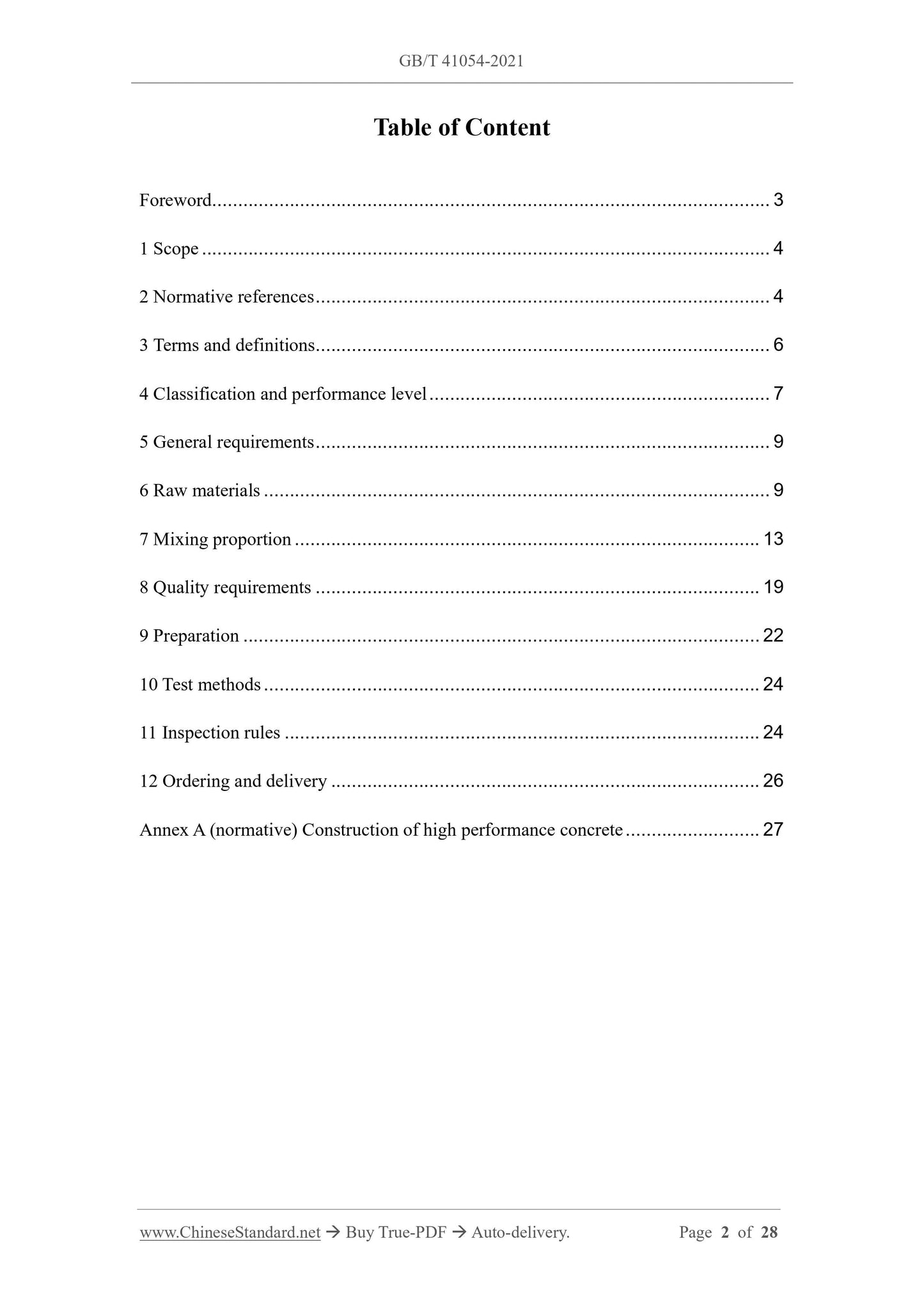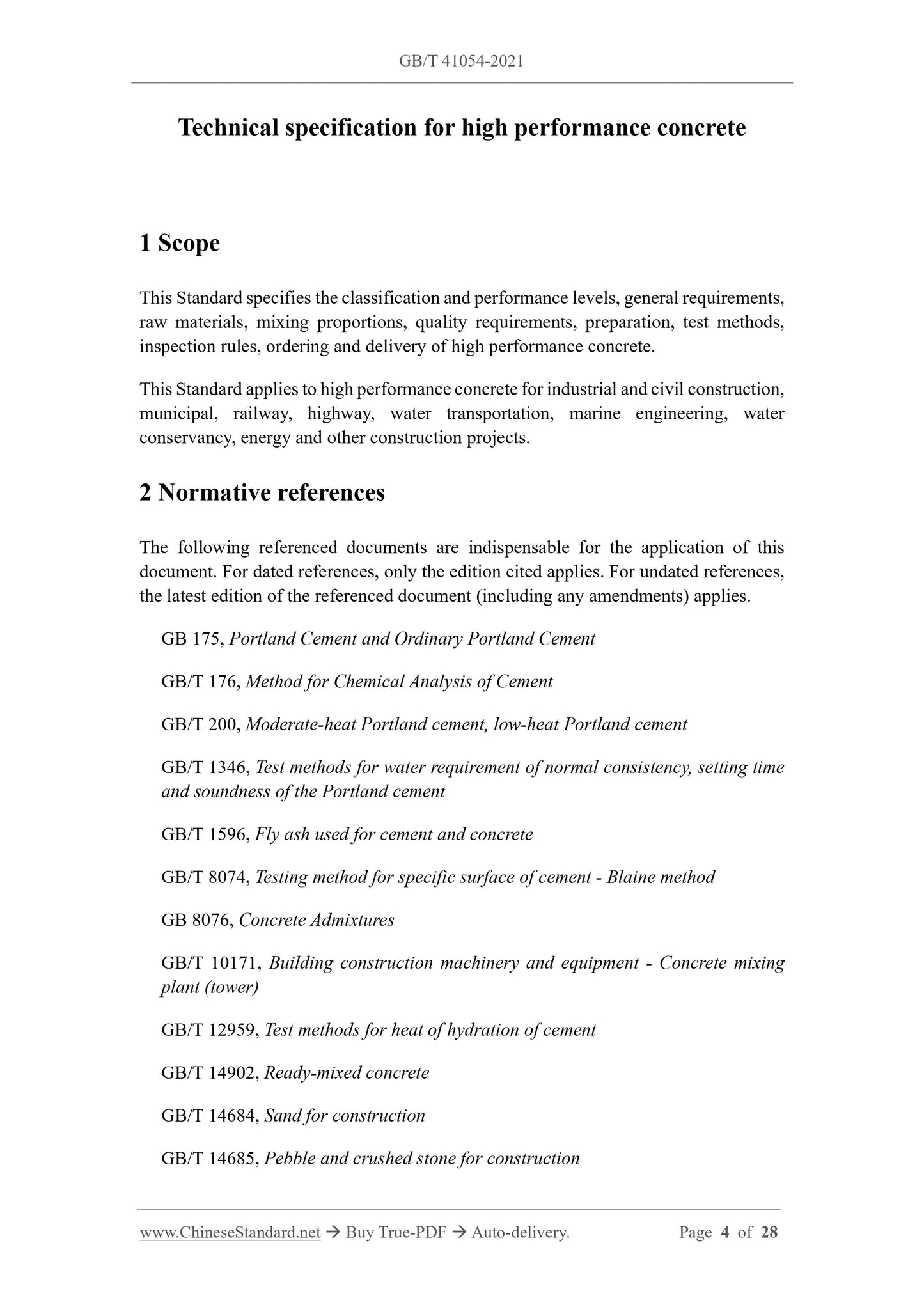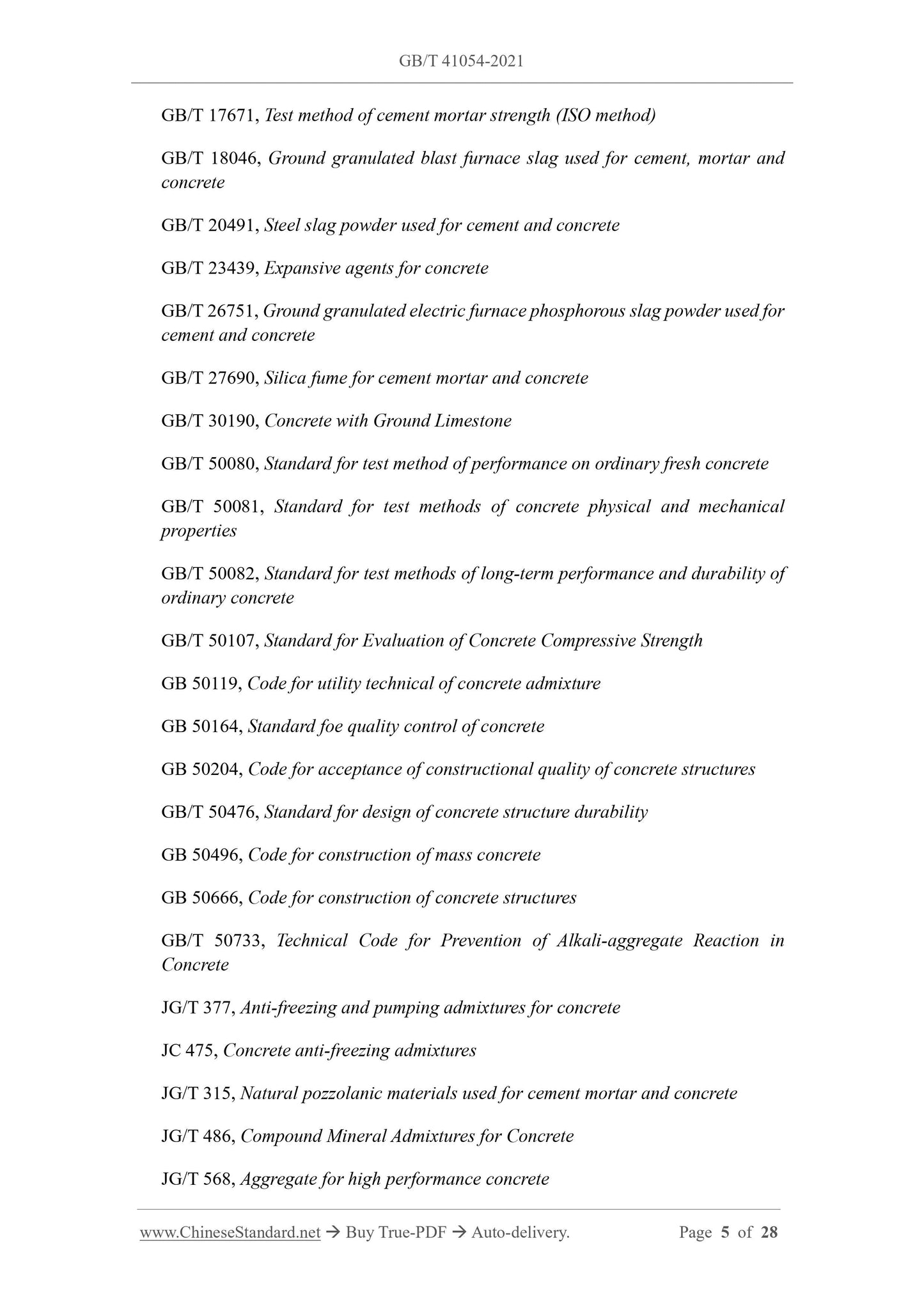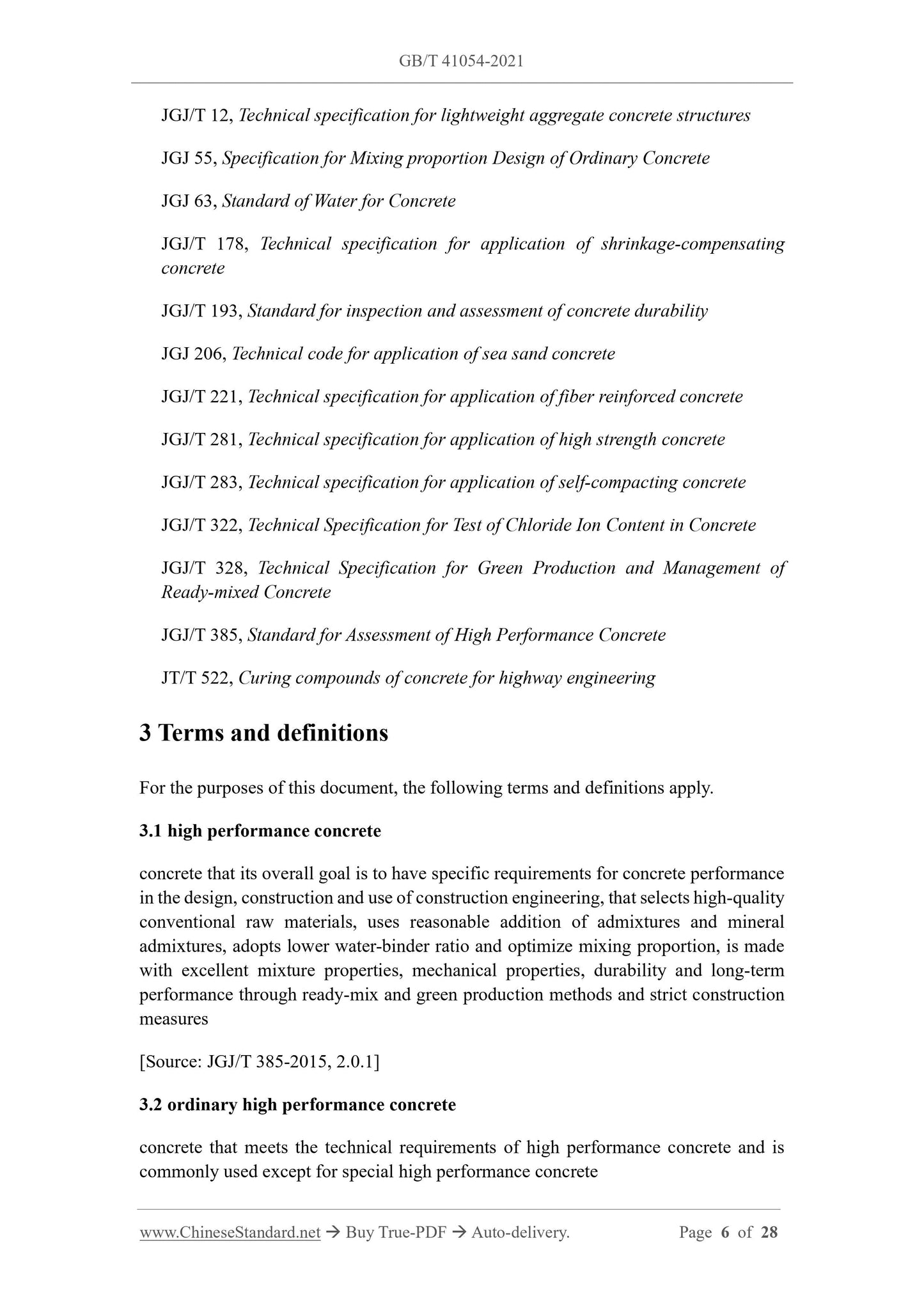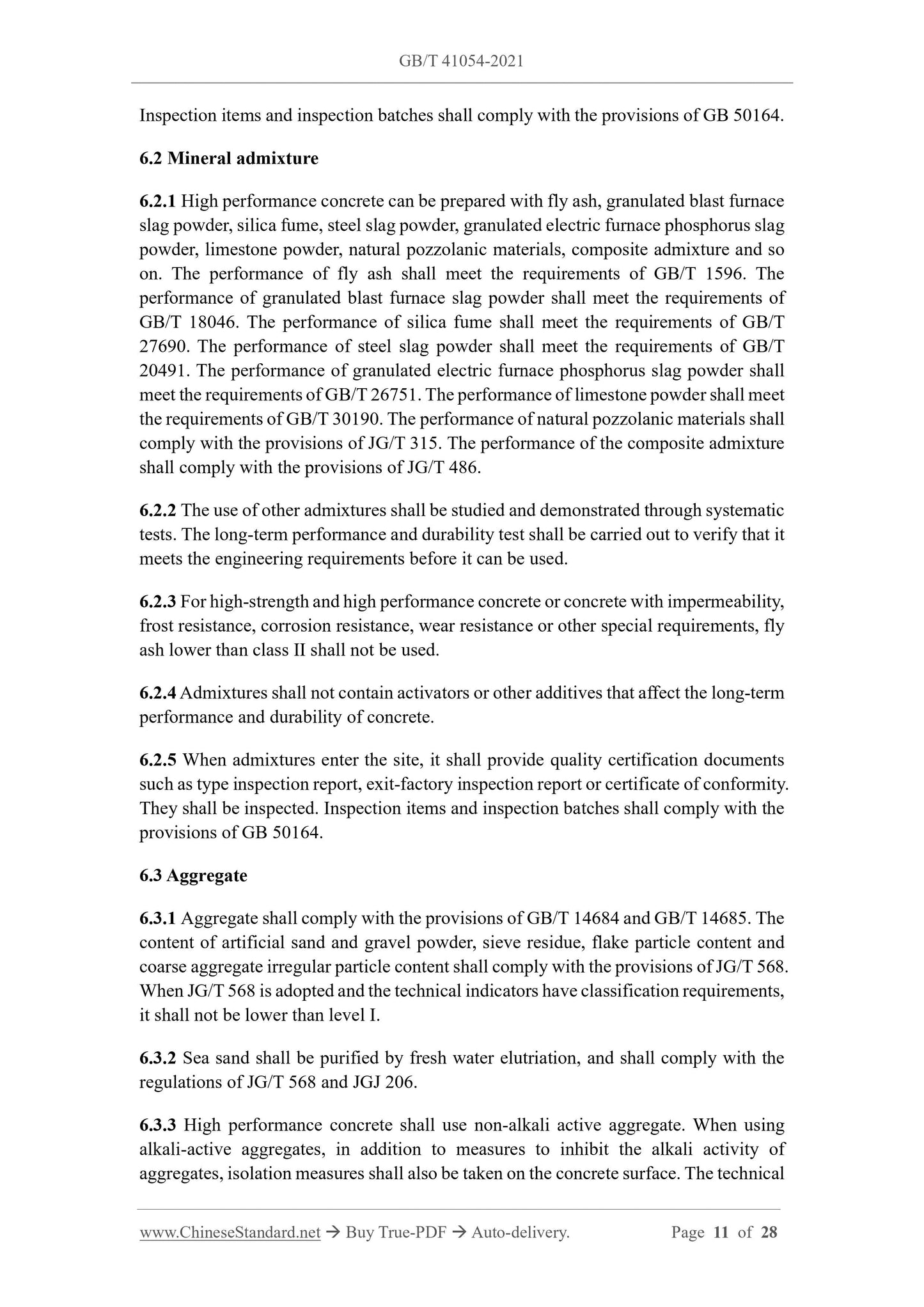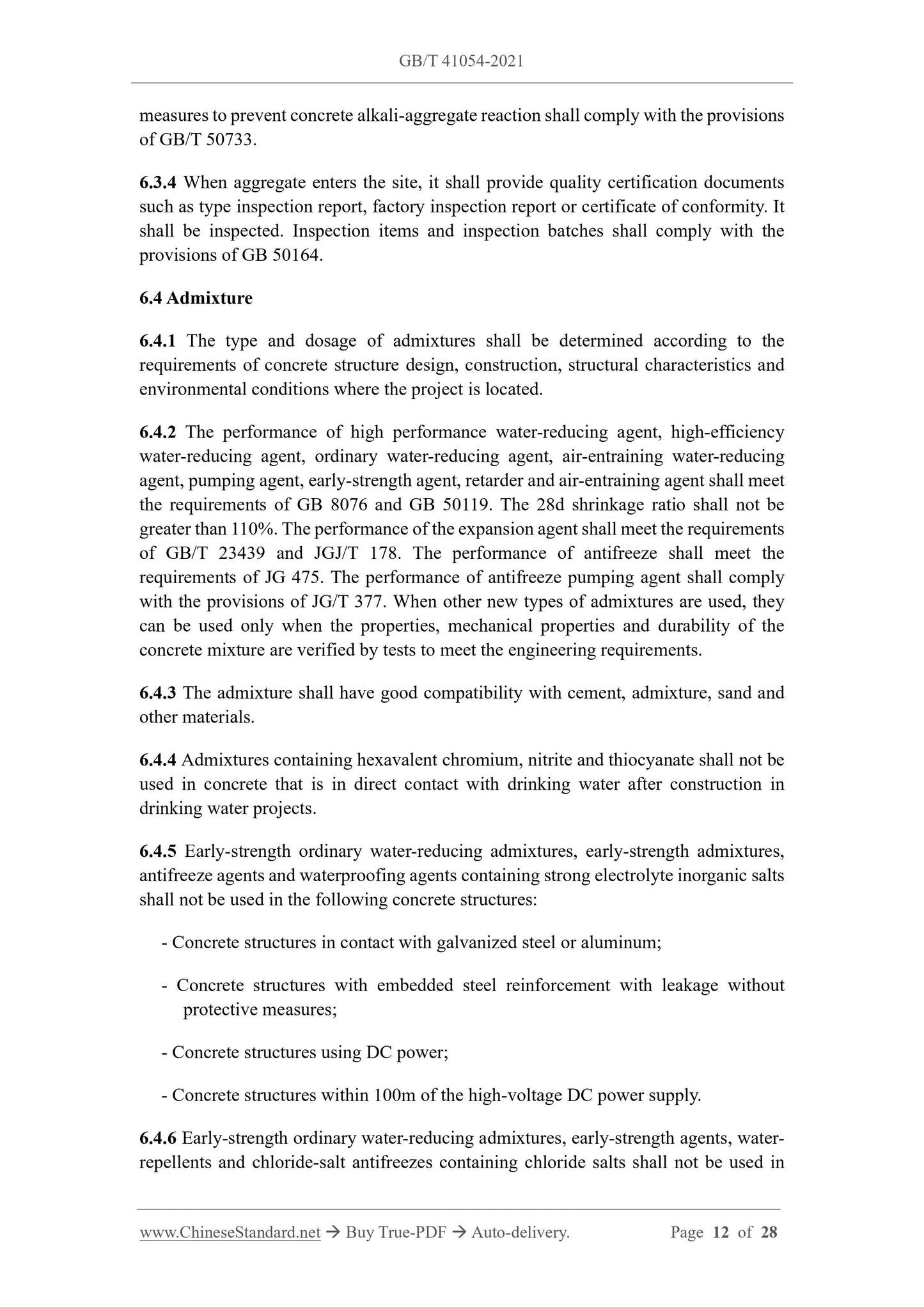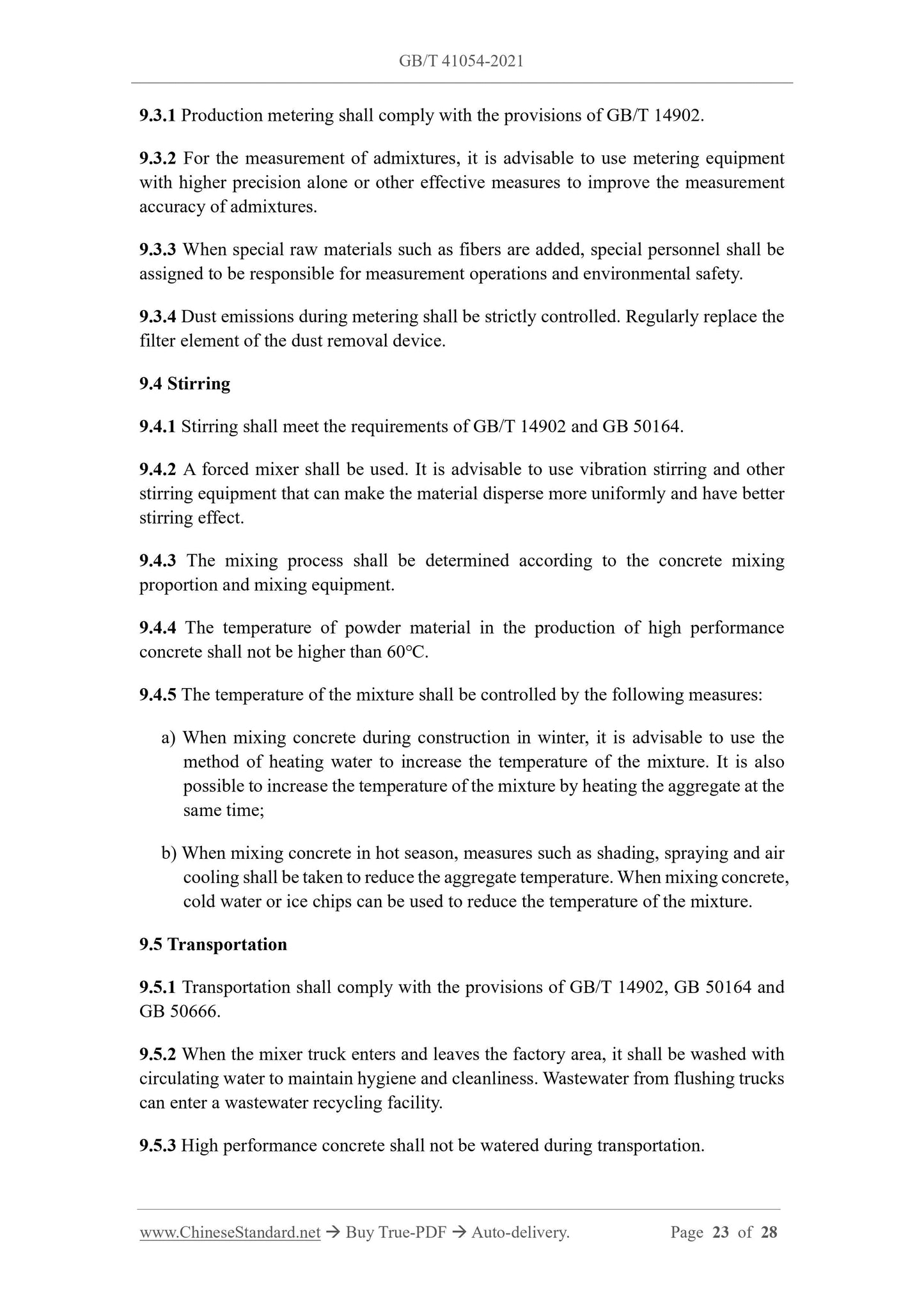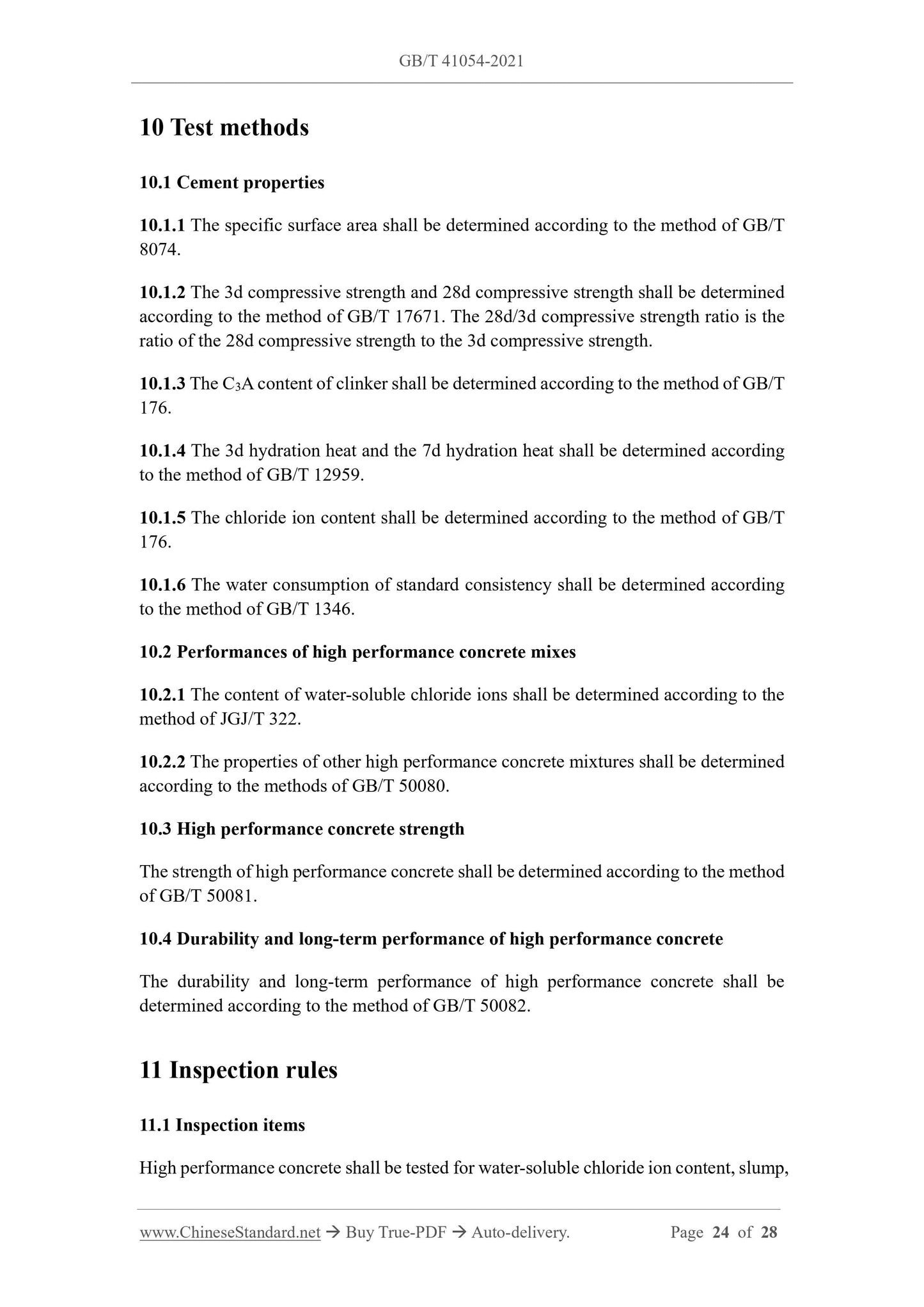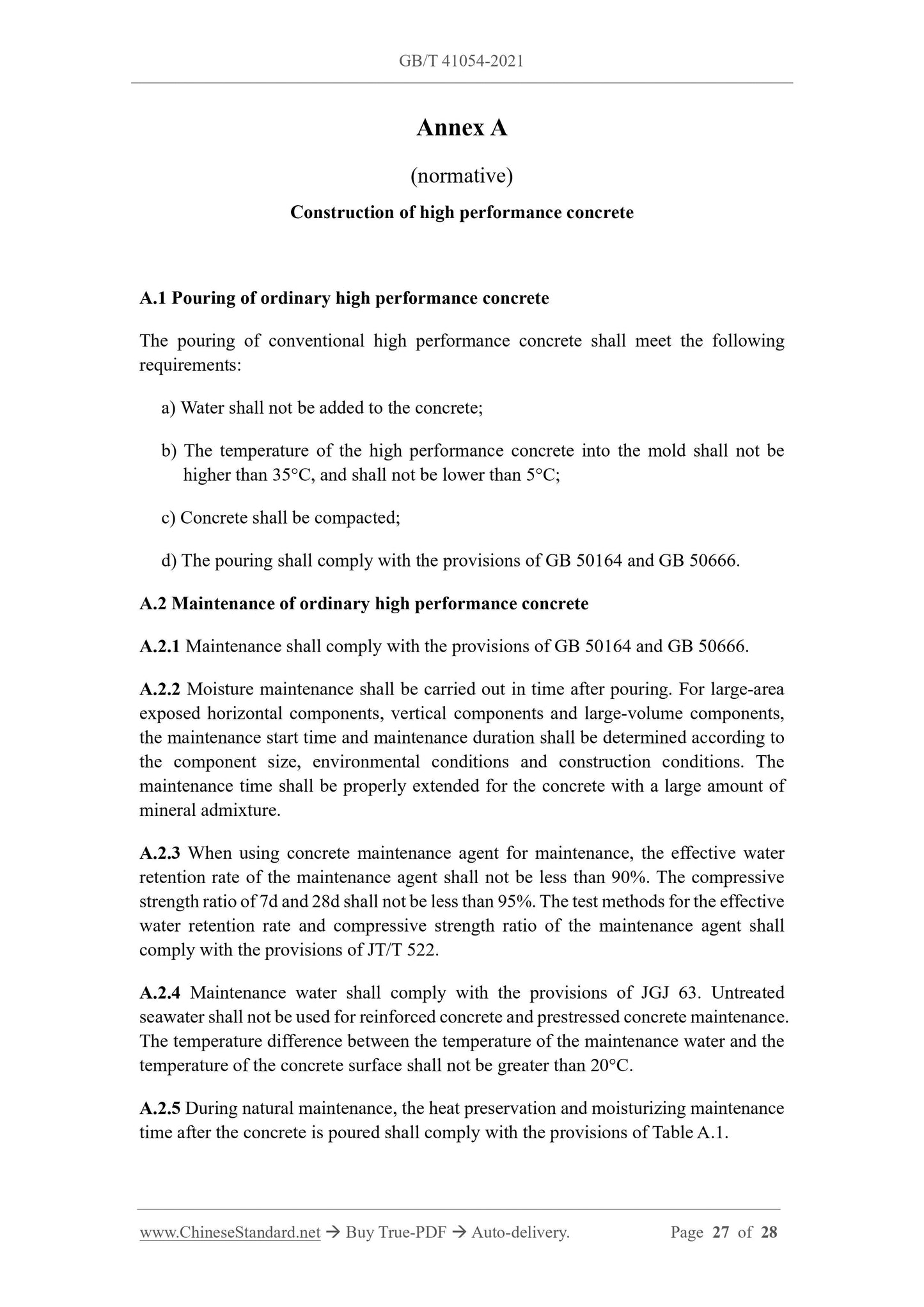1
/
of
10
www.ChineseStandard.us -- Field Test Asia Pte. Ltd.
GB/T 41054-2021 English PDF (GB/T41054-2021)
GB/T 41054-2021 English PDF (GB/T41054-2021)
Regular price
$290.00
Regular price
Sale price
$290.00
Unit price
/
per
Shipping calculated at checkout.
Couldn't load pickup availability
GB/T 41054-2021: Technical specification for high performance concrete
Delivery: 9 seconds. Download (and Email) true-PDF + Invoice.Get Quotation: Click GB/T 41054-2021 (Self-service in 1-minute)
Newer / historical versions: GB/T 41054-2021
Preview True-PDF
Scope
This Standard specifies the classification and performance levels, general requirements,raw materials, mixing proportions, quality requirements, preparation, test methods,
inspection rules, ordering and delivery of high performance concrete.
This Standard applies to high performance concrete for industrial and civil construction,
municipal, railway, highway, water transportation, marine engineering, water
conservancy, energy and other construction projects.
Basic Data
| Standard ID | GB/T 41054-2021 (GB/T41054-2021) |
| Description (Translated English) | Technical specification for high performance concrete |
| Sector / Industry | National Standard (Recommended) |
| Classification of Chinese Standard | Q13 |
| Word Count Estimation | 21,267 |
| Issuing agency(ies) | State Administration for Market Regulation, China National Standardization Administration |
Share
